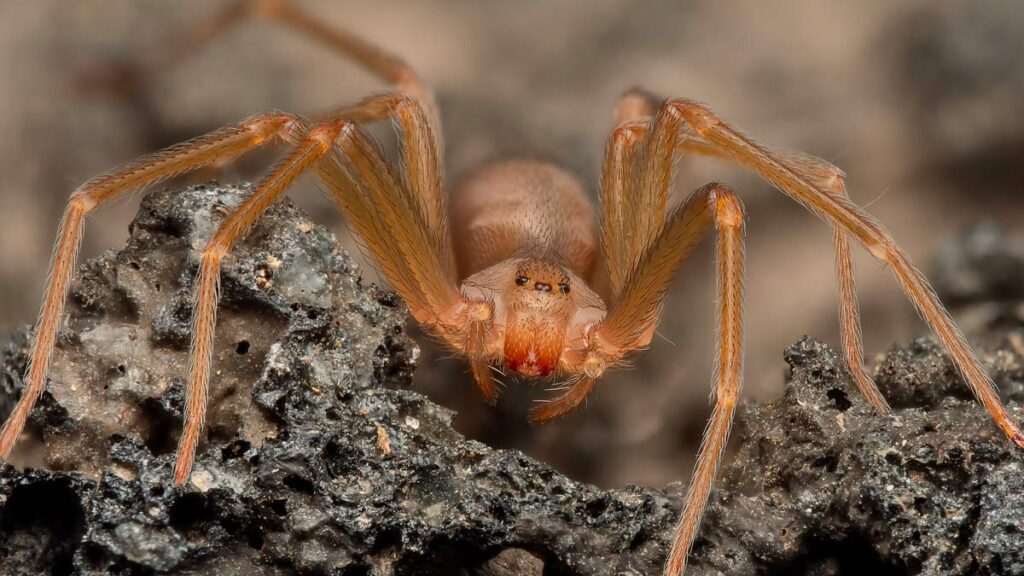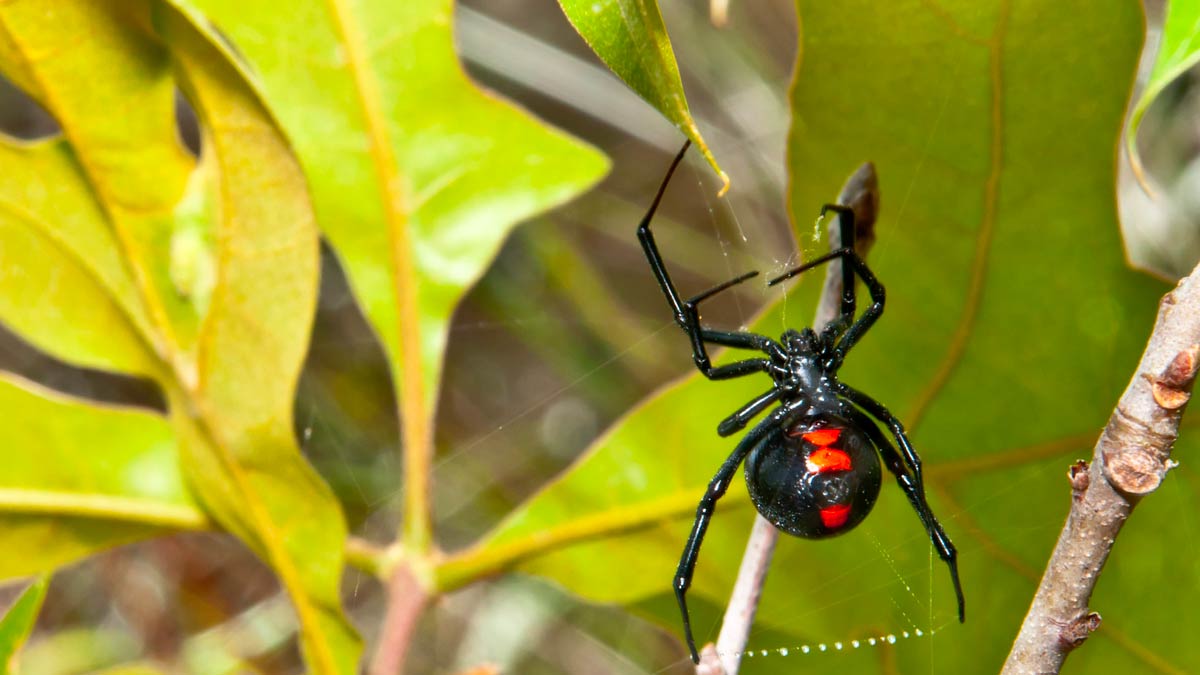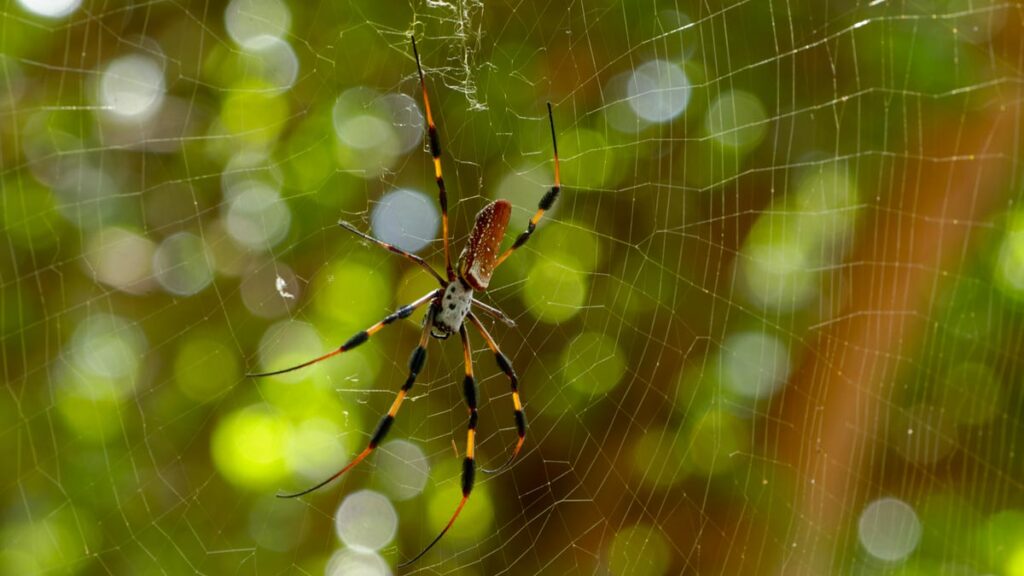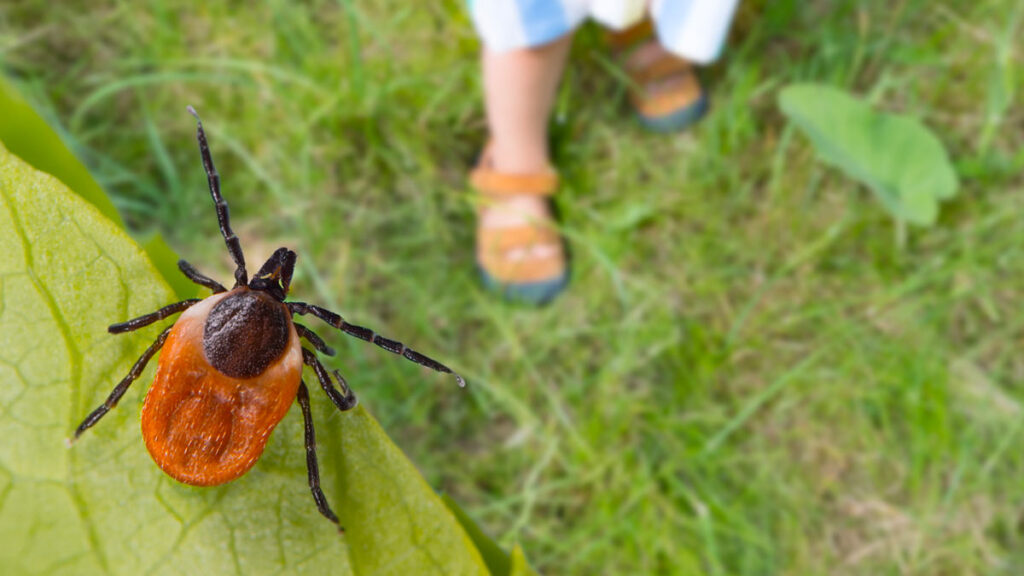
Black Widows in Florida
Risks, Removal, and Everything You Need to Know
Updated on: January 2024

In the sun-drenched landscapes of Florida, the presence of the black widow spider has become an unmistakable reality for its residents. The black widow, instantly recognizable by its shiny black exoskeleton and the iconic red hourglass marking on its abdomen, is more than just a symbol of nature’s intriguing design. Its bite, though seldom fatal, can deliver a powerful venom that causes significant discomfort, making it one of the most formidable spiders in North America.
Florida’s temperate climate, coupled with its varied ecosystems ranging from swamps to urban dwellings, offers the black widow multiple habitats for colonization. The frequent human-spider encounters are not just a result of the black widow’s proliferation but are also indicative of Florida’s expanding urban areas which often intersect the natural habitats of these spiders.
The significance of this topic transcends mere fascination. Given the health implications of a black widow bite and the spider’s adaptability to environments shared by humans, Floridians must prioritize understanding this species. In doing so, they arm themselves with the knowledge needed to coexist safely and responsibly with one of nature’s most notorious arachnids.
Find What You Need
Identifying the Black Widow
Distinct Features of the Black Widow Spider in Florida
The black widow spider, scientifically known as *Latrodectus*, is particularly distinguished by its glossy black coloration. In Florida, the Southern black widow (*Latrodectus mactans*) is most commonly encountered. The female of this species is renowned for its bulbous abdomen adorned with a distinctive red hourglass-shaped marking on the underside, although this can sometimes appear as two separate spots. Their bodies typically measure about 1.5 inches, including their leg span.
Differences Between Male and Female Black Widows
Sexual dimorphism is evident in black widows, making it relatively straightforward to distinguish between the genders. Female black widows, which are the most widely recognized, are larger, showcasing the iconic black coloration and the aforementioned red markings. On the other hand, male black widows are often smaller, measuring just about half the size of their female counterparts. They usually possess a lighter brown hue and may have varied patterns or streaks on their abdomen, lacking the distinctive red hourglass. Additionally, males are less venomous than females and are generally considered harmless to humans.
For those looking for a reference, the ‘Spider Identifier Field Guide’ by Dr. Nancy Troyano is an excellent resource. It provides photographs and descriptions to help users differentiate between various spider species, including the black widow.
Common Misconceptions
Several misconceptions surround the black widow spider. One of the most prevalent myths is that all black spiders with red markings are black widows. In reality, other spiders, such as the redback spider or the woodlouse hunter, can also display similar color patterns. Another common fallacy is the belief that the bite of a black widow is always fatal. Although the venom can cause severe reactions in certain individuals, especially the young, elderly, or immunocompromised, fatalities are exceptionally rare. Timely medical intervention can manage and alleviate most symptoms. Products like ‘After Bite’, available for around $7-$10 in most pharmacies, can offer temporary relief from minor spider bites, but it’s always essential to seek professional medical advice if a black widow bite is suspected.
The Takeaway
Florida’s warm climate and diverse landscapes provide a habitat where the Southern black widow thrives, with recent surveys reporting encounters in nearly 90% of the state’s counties, prompting a need for heightened awareness, prevention, and safe removal strategies.
Understanding the Risks
As Florida’s residents coexist with the black widow, understanding the potential health risks and the urgency of appropriate measures is essential.
Risks of Black Widow Bites
The black widow is notorious for its potent venom, which is said to be around 15 times stronger than that of a rattlesnake, albeit delivered in much smaller quantities. While a bite might not always result in venom injection (known as a “dry bite”), when venom is injected, it can lead to a condition called latrodectism. This syndrome results from the venom’s active component, alpha-latrotoxin, which affects the nervous system and leads to various symptoms.
Urgency of Medical Attention
Immediate medical attention after a black widow bite is crucial. The sooner the symptoms are addressed, the better the outcome for the patient. Delays in seeking care can exacerbate symptoms and prolong recovery. Although fatalities from black widow bites are extremely rare, complications can arise if not treated promptly. It’s always a good idea to have an emergency number, like Poison Control (1-800-222-1222), saved and accessible.
Vulnerable Age Groups or Individuals
Children, the elderly, and individuals with compromised immune systems are the most susceptible to severe reactions from a black widow bite. Their bodies may not respond as robustly or quickly in neutralizing the venom, leading to heightened symptoms and prolonged recovery. People with underlying medical conditions, such as heart diseases or respiratory issues, should be especially vigilant.
Symptoms of Bites
While initial symptoms might include localized pain, redness, and swelling, the venom’s systemic effects can manifest within an hour. These include muscle cramps, especially in the abdomen, sweating, fever, chills, nausea, headache, and in rare cases, elevated blood pressure. Over-the-counter pain relief medications, such as Tylenol or Advil, might provide temporary relief but should be used after consulting with a healthcare professional.
First Aid Recommendations
If bitten, it’s important to remain calm and take immediate action:
Wash the Bite Area – Gently clean the bite with soap and water to reduce the risk of infection.
Immobilize and Elevate – If bitten on a limb, keep it immobilized and slightly elevated.
Cold Packs – Applying a cold pack can help alleviate swelling and pain. Brands like “Cura-Heat” or “Nexcare” offer cold packs for around $5-$10 at most pharmacies.
Avoid Alcohol and Caffeine – These can increase venom absorption.
Seek Medical Attention – As mentioned, it’s paramount to consult a healthcare professional promptly. While waiting for medical help, it’s beneficial to have an “After Bite” or similar product at hand, retailing for about $7-$10, for temporary symptom relief. Remember, these are interim solutions and should not replace professional medical care.
Black Widow Habitats and Behavior in Florida
Prevalence of Black Widows in Florida
Florida’s subtropical climate proves to be a welcoming environment for the Southern black widow (*Latrodectus mactans*). The state’s warm temperatures, combined with its varied landscapes, serve as an ideal backdrop for these spiders to thrive. Recent studies, including those from the University of Florida’s Entomology Department, have highlighted an upward trend in black widow encounters. As per the latest data, nearly 90% of Florida’s counties have reported the presence of these arachnids, underscoring their widespread distribution.
Typical Habitats
Attracted to warmth and secluded spaces, black widows have a proclivity for establishing their webs in areas where they can remain undisturbed. Their preference for heat links back to their metabolic needs; warmer temperatures accelerate their metabolism, aiding in quicker digestion and faster reproduction cycles. In Florida, these spiders are often discovered beneath logs, rocks, and outdoor furnishings. They also prefer the insides of hollow tree trunks, as well as the shadowed nooks of garages, sheds, and basements. Their webs are distinctive, being sticky and irregular in form. For homeowners wanting to minimize black widow habitation in specific areas, products like “Web Away” spray, priced around $15, can prove effective in deterring spider activity.
Seasonal Activity Fluctuations
Florida’s seasonal temperatures play a significant role in dictating the activity levels of black widows. They tend to be most active during the state’s warmer months, predominantly from April to October. This heightened activity correlates with their hunting patterns, mating rituals, and egg-laying periods. To mitigate the indoor presence of spiders during these active months, residents can utilize spider traps. Brands like “Terro Spider Trap”, retailing at approximately $5 for a four-pack, offer an effective and non-toxic method of monitoring and controlling spider populations within homes.
Impact of Rainfall on Activity
Florida’s rainfall patterns, characterized by sudden heavy downpours, especially during summer, can substantially disrupt the habitats of black widows. When their natural habitats become waterlogged, these spiders seek drier, often elevated grounds. Consequently, there’s an uptick in the likelihood of human-spider encounters post-heavy rainfall. During prolonged dry periods, they might venture into shaded or indoor regions, driven by the search for prey that’s similarly escaping the sun’s intensity. To create a protective barrier against these wandering spiders, homeowners can consider perimeter treatments. A popular choice is the “Ortho Home Defense”, with its price hovering around $15 for a 1-gallon container. This product effectively repels a variety of pests, including spiders, from making their way indoors.
Prevention and Protection Measures
Safeguarding against black widows requires a comprehensive approach, including homeowner strategies, safe practices, and eco-friendly repellents.
Homeowner Strategies to Deter Infestations
Homeowners can take a multifaceted approach to minimize the likelihood of black widow infestations. First, regular house cleaning, especially in dark, secluded corners, can prevent spiders from settling. Using a vacuum cleaner, especially those with a long nozzle like the “Dyson V11 Animal”, priced around $600, can help reach those tight corners and effectively suck up spiders and their egg sacs. Secondly, sealing cracks and gaps in walls, floors, and windows can deter their entrance. Products such as “DAP Dynaflex 230”, which costs approximately $5 for a 10.1-ounce tube, can be used for sealing purposes.
Safe Practices in Black Widow-Prone Areas
When working or moving in areas where black widows might reside, it’s advisable to wear gloves. Brands like “Firm Grip Pro” offer protective gloves for about $10 a pair. Always inspect gloves, shoes, and other items left outdoors or in storage before wearing or using them. Using flashlights, such as the “Anker Bolder LC90” at around $30, in dark areas can aid in spotting these spiders and avoiding accidental encounters.
Inspection Frequency
For homes or properties in areas known to have a high prevalence of black widows, monthly inspections, especially during warmer months, are recommended. Employing professional pest control services like “Orkin” or “Terminix” for quarterly inspections can provide a more thorough assessment, with costs ranging from $100 to $300 per visit, depending on the property size and specifics of the service.
Plants or Landscaping Deterrents
Certain plants are natural spider repellents. For instance, planting lavender, mint, or eucalyptus around the house can help deter spiders due to their strong scents. These plants generally cost between $5 to $20 for starter plants at local nurseries. Additionally, keeping the landscape tidy by trimming overgrown vegetation and removing debris can limit the habitat options for black widows.
Eco-friendly Repellents
For those who prefer an environmentally conscious approach, diatomaceous earth, a natural powder, can be sprinkled around the home’s perimeter, acting as a deterrent. It’s available at many garden centers, with brands like “Safer Brand” selling a 4-pound bag for around $15. Another eco-friendly option is essential oil sprays, especially those containing peppermint or lemon. Mixing a few drops of these oils with water and spraying in spider-prone areas can act as a repellent.
Efficacy of Commercial Repellents
Commercial spider repellents, typically formulated with chemicals like deltamethrin or pyrethroids, are designed to be potent against spiders. Brands like “Hot Shot Spider & Scorpion Killer” and “Raid Max” have garnered positive reviews, with prices ranging from $5 to $12 for an aerosol can. While effective, homeowners should be cautious of using these in homes with pets or children and always follow label directions. It’s essential to weigh the pros and cons of each repellent and consider factors such as the product’s longevity, safety, and overall efficacy.
The Natural Balancing Act: Predators of the Black Widow
Florida’s intricate ecosystem involves a range of native predators that play a role in maintaining the balance with the black widow population.
Native Predators in Florida
Florida’s diverse ecosystem boasts a variety of creatures that naturally help control the black widow population, acting as checks and balances in the food chain.
Praying Mantises
These voracious predators are not picky eaters and will consume almost any insect or arachnid that crosses their path, black widows included. Their patient hunting technique allows them to ambush unsuspecting spiders, seizing them with their spiky front legs.
Sphecid Wasps
These wasps, particularly the blue mud dauber, are known to hunt spiders. They paralyze their prey with a sting and then transport them to their nests. Once there, the wasp lays its eggs on the spider, providing a fresh meal for the larvae once they hatch.
Birds
Several bird species in Florida, such as the loggerhead shrike and certain types of wrens, feed on spiders, including black widows. These birds possess sharp eyesight and agility, enabling them to snatch spiders from their webs or ground locations.
Larger Spiders
Interestingly, spiders can be cannibalistic. Larger spider species, like the wolf spider, have been known to prey on black widows when their paths cross.
Predatory Beetles
Certain beetles, such as the ground beetle, actively hunt and consume black widow spiders. These beetles are relentless hunters and play a significant role in controlling spider populations in specific habitats.
Understanding these natural predator-prey relationships underscores the importance of maintaining a balanced ecosystem. Reducing the use of broad-spectrum pesticides that might harm these beneficial predators can support nature’s way of keeping black widow populations in check.
Safeguarding Loved Ones and Pets
Ensuring the safety of loved ones, including children and pets, involves educating them about the potential dangers of black widows and implementing protective measures.
Educating Children About Dangers
When it comes to black widows, prevention through education is a crucial step in safeguarding our young ones. Here’s how you can effectively educate children about these spiders:
Visual Identification – Using pictures and books, teach children how to recognize a black widow spider, emphasizing its distinct red hourglass marking. Educational tools like “Spiders of Florida: A Field Guide” can be a handy resource.
Safety Protocols – Instruct children never to touch or play with spiders. Emphasize the importance of informing an adult immediately if they spot a black widow or any unfamiliar spider.
Safe Play – Encourage kids to check their shoes, especially if left outdoors, and to be cautious when playing in areas like sheds, garages, or near woodpiles, where black widows are likely to inhabit.
First Aid Basics – While it’s essential to teach avoidance, it’s equally important to educate older children about basic first aid steps if they or a friend gets bitten, including keeping calm, avoiding movement of the bitten area, and seeking immediate adult help.
Risks to Pets and Protective Measures
Pets, especially dogs and cats that spend time outdoors, are at risk of encountering black widows.
Signs of Envenomation – While pets are generally more resistant to spider toxins than humans, they can still show symptoms if bitten. These might include localized pain, swelling, muscle tremors, fever, and difficulty breathing.
Safe Spaces – Ensure pet resting or playing areas, like doghouses or patios, are free from spiders. Regularly inspect these areas, and consider using pet-friendly repellents to deter spiders.
Veterinary Advice – Always have the contact details of your veterinarian or a 24-hour emergency vet clinic handy. If you suspect your pet has been bitten, it’s crucial to consult with a vet immediately.
Training – Train pets, particularly dogs, to avoid chasing or “playing” with insects and spiders. Simple commands like “leave it” can be effective.
Protective Wear – If you reside in a heavily spider-infested area, consider protective wear for pets during outdoor activities. Products like the “Outward Hound Fun Feeder” can deter pets from poking their noses into spider-prone areas when outdoors.
By taking a proactive approach and focusing on education and awareness, both human and animal members of the family can be protected from potential encounters with black widows.
Professional Removal and DIY Considerations
Safety of DIY Removal
Handling and removing black widows on your own is not without its challenges, and safety should be paramount.
Gear Up – Before attempting DIY removal, ensure you have the right protective equipment. This includes thick gloves, long-sleeved shirts, and pants. A safety kit such as the “Bug Handling Protection Kit” available for around $25, can provide basic gear for spider handling.
Stay Informed – Knowledge is your best tool. Understand the habits and behaviors of black widows so you can approach their removal safely.
Limitations – Recognize when a situation is beyond your expertise. In cases of widespread infestations or when black widows are found in hard-to-reach places, it’s wiser to consult professionals.
Effective Removal Methods
When dealing with black widows, it’s essential to choose effective removal methods that prioritize safety for both you and the spider. Here are some tried-and-tested approaches:
Vacuuming: A Practical Approach
Vacuuming is a straightforward method for removing black widows, especially when they’re in easily accessible locations. Using a vacuum cleaner with a hose attachment is key to keeping a safe distance. Devices like the “Shark Navigator Lift-Away Deluxe NV360”, priced at around $200, offer sufficient suction power to capture spiders without endangering yourself. After vacuuming, it’s crucial to take immediate steps to prevent escape. Seal the vacuum bag or contents in a durable plastic bag and dispose of it promptly.
Spider Catchers: The Gentle Approach
For those who prefer to keep their distance, spider catchers are an excellent choice. The “Critter Catcher”, available for about $20, is a popular tool that allows you to pick up and contain spiders from a safe distance. Its design prevents harm to both you and the spider, making it an ideal choice for those who want to relocate spiders outdoors without causing harm.
Diatomaceous Earth: A Natural Solution
Diatomaceous earth is a natural substance that can be a valuable tool in managing spider populations. This fine powder, composed of fossilized diatoms, works by damaging the exoskeleton of spiders and other small pests, leading to dehydration and eventual death. Sprinkle diatomaceous earth around areas where spiders are frequent, such as corners, cracks, and crevices. It’s a cost-effective solution, often available in garden centers or online for approximately $10-$15 per bag.
Insecticides: The Chemical Route
For those comfortable using chemical solutions, pyrethroid-based sprays are effective against black widows. Brands like “Raid Spider Blaster” and “Terro Spider Killer Spray” are trusted options, usually priced between $5 and $10. When using insecticides, always prioritize safety by reading and following the label instructions meticulously. Adequate ventilation and protective gear are essential to minimize risks to humans and pets.
Remember, the effectiveness of these methods can vary based on the severity of the infestation and the spider’s location. It’s important to choose an approach that aligns with your comfort level and the specific circumstances at hand.
Handling Black Widow Egg Sac Discoveries
Identification – Black widow egg sacs are often spherical and have a paper-like texture. They can contain hundreds of spiderlings.
Safe Removal – Using a long tool or wearing gloves, gently remove the egg sac and place it in a sealed plastic bag.
Disposal – Once securely contained, you can freeze the bag to ensure all potential spiderlings are neutralized before discarding it in the trash.
Avoid Crushing – It’s vital not to crush the egg sac, as this may release the spiderlings.
Consultation – If you find multiple egg sacs or aren’t sure about their identification, consult a professional exterminator for guidance.
While DIY methods can be effective for isolated encounters with black widows, large infestations or recurring problems might necessitate professional intervention. Ensure you’re making informed decisions that prioritize safety for both yourself and your household.
Local Resources in Florida
When facing concerns related to black widows in Florida, there are resources and agencies that can provide assistance and guidance.
Florida Department of Agriculture and Consumer Services (FDACS) – The FDACS offers information about pest management and can direct you to licensed pest control professionals. Visit their website or contact their local offices for advice.
Local Pest Control Companies – Professional pest control services, such as “Truly Nolen” or “Massey Services,” have expertise in managing black widow infestations. They can offer comprehensive solutions tailored to your specific situation.
County Extension Offices – Florida’s county extension offices are valuable resources for localized information on pest control and spider management. They can provide advice specific to your region.
Conclusion
As the warm and vibrant state of Florida coexists with the enigmatic black widow spider, understanding the risks, prevention measures, and safe removal techniques becomes essential. By recognizing the distinct features of these spiders, educating loved ones, and implementing preventive strategies, Floridians can ensure a safer environment. Regular inspections, awareness of vulnerable populations, and the integration of natural predators all contribute to a balanced ecosystem. Whether opting for professional assistance or engaging in DIY methods, the well-being of both humans and pets remains paramount. In this dynamic relationship with nature, knowledge and responsible actions stand as our best defense against the allure and potential dangers of the black widow. Through awareness, prevention, and safe removal practices, Floridians can confidently navigate the intricate web of coexistence with these arachnid inhabitants.





